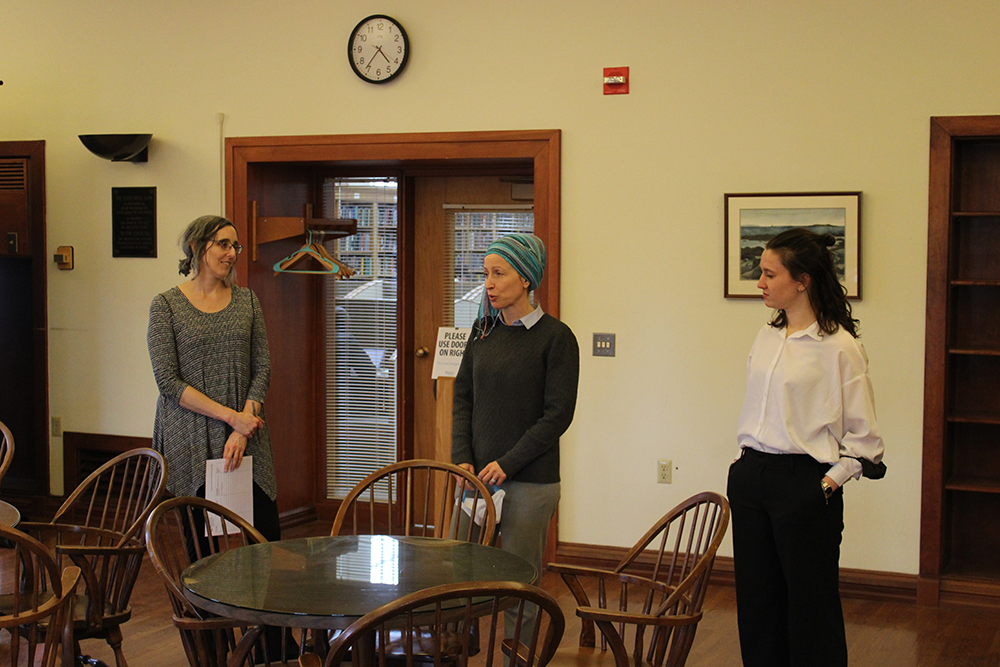University of Maine Fogler Library held an informative workshop on April 3, hosted by Fogler librarian Jen Bonnet and Department Chair and Associate Professor of Communication and Journalism at UMaine Judith Rosenbaum with guest speaker Sanne Tamboer. The objective of their Monday evening presentation was to “break the bubble” of bias and misinformation within the media and elaborate upon the simple but highly beneficial methods of enhancing news literacy.
The discussion kicked off with a brief description of its goals. First is to understand the concepts of news and how content is made. Furthermore, another goal is to be able to recognize the actual decisions made in both the creation and sharing of content.
“It’s important to understand the opportunities and constraints, the pressures and possibilities, of news production, and how those shape the construction of the stories we encounter,” said Bonnet.
There are four components to be considered when determining whether or not a particular piece is newsworthy, and those aspects change from person to person. One is timeliness, or how long ago the particular event took place and whether or not it is still relevant. Next is conflict/prominence: who the person or group directly involved in the information may be and why the community should care.

Proximity also plays a role. While certain announcements are notable enough to be shared internationally, other types are specific to a particular region and superfluous to those far away. Finally is impact: ways that the news affects how society functions as a whole.
Most news articles can be divided into three main segments: the lede (essential information: who, what, when, where why and how), the body (additional details, expanding upon the lead) and lastly the tail (information that is not absolutely necessary but still good to include).
In order to determine whether a source is trustworthy or untrustworthy, it is vital to understand what is influencing the particular news story. For example, one may work to pinpoint the goal of the article, whether it be to inform, entertain, persuade or even mislead. It is also helpful to consider the outlet that the author is using to share their material as well as who the target audience may be.
The most imperative action is to determine the extent of the article’s accuracy. Some find this to be difficult as a story could be completely verifiable, have twisted facts here and there or be completely false. One way to determine credibility and potential bias is to compare and contrast different news outlets.
The workshop introduced attendants to the website allsides.com. The website allows you to search for a particular event or political topic and view three articles written from different perspectives. You then have simultaneous access to stories with contrasting headlines, one being left-leaning, another centered and the other right-leaning.
Tamboer is a Postdoctoral Researcher in communication and media studies at the Behavioural Institute at Radboud University in the Netherlands. Her main focus revolves around journalism and her project focuses on news literacy in early adolescence. Throughout the last few years, Tamboer has had articles published in various journals relating to effective intervention practice in terms of interpreting media.
“It is important to understand the opportunities and constraints, the pressures and possibilities, of news production, and how those shape the construction of the stories we encounter,” Tamboer said.
Bonnet is the social sciences and humanities librarian at UMaine. She is incredibly knowledgeable about journalistic practice and skilled at guiding students through the process of acquiring reliable sources for their research. While Bonnet does lead many group workshops to advise people on effective ways to utilize library resources, she is also willing to work one-on-one, in person or via Zoom by appointment.
Rosenbaum’s area of focus is on media consumption and its effect on both the individual as well as society as a whole. Rosenbaum has recently published a book titled “Constructing Digital Structures: Tweets, Trends, Race, and Gender,” which can be purchased through the Rowman & Littlefield website.
For more news literacy information, visit https://library.umaine.edu/.
Article updated on Tuesday, April 18.








